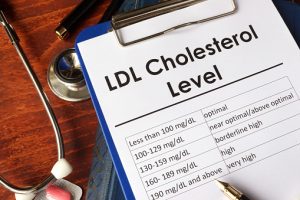 Cholesterol is often referred to as the “silent killer,” as it accumulates along your arteries, slowly causing damage over time. As a result of this build-up of plaque, your health becomes severely at risk. If you overlook the symptoms, your risk of complications rises.
Cholesterol is often referred to as the “silent killer,” as it accumulates along your arteries, slowly causing damage over time. As a result of this build-up of plaque, your health becomes severely at risk. If you overlook the symptoms, your risk of complications rises.
When discussing cholesterol, LDL cholesterol is often the culprit of any concerning symptoms. This is because LDL cholesterol is the type that causes your arteries to narrow, reducing blood circulation. HDL cholesterol, on the other hand, is considered the good cholesterol because it has the ability to remove LDL cholesterol, which in turn protects your health.
Advertisement
Although cholesterol is a hot topic, there may be many things you do not know regarding cholesterol and your health. Therefore, if you are unsure about anything regarding cholesterol, you should read on to learn the facts in order to protect your health.
Facts about cholesterol
First and foremost, cholesterol builds up in the blood vessels. As cholesterol levels increase, so does build-up along the blood vessels. As mentioned, this plaque thickens, which causes blood vessels to narrow. As a result, the heart must pump harder to supply the body with sufficient oxygenated blood to function. This added stress on the heart is what can contribute to a heart attack.
Here’s a fun fact: did you know that the famous Mona Lisa had high cholesterol? It’s true. The 16th century Italian High Society member was spotted with yellowish fatty deposits beneath her eyes—known as xanthelasmas—which is a sign of high cholesterol. Being of high society, Mona Lisa may have been accustomed to eating high-fat foods, which could contribute to her high cholesterol.
As mentioned there are two types of cholesterol: HDL and LDL. HDL is considered the good cholesterol because it removes LDL cholesterol. It does this by carrying LDL cholesterol back to the liver where it can become broken down. Due to their being two varieties of cholesterol, your doctor will want to check the ratio of both to ensure you have more HDL than LDL.
Although high blood pressure and cholesterol may occur together, blood pressure does not contribute to high cholesterol. Rather, high cholesterol can lead to high blood pressure because your heart has to work harder to pump blood throughout the body. This increases the pressure when the blood travels through the arteries.
Many of us believe that high cholesterol is a problem for those over the age of 50, but children can also have high cholesterol either as a result of genetics or because of a poor diet high in saturated fat.
The unfortunate part about high cholesterol is that many of us don’t realize we have it. You won’t feel or look sick either, so you may not be prompted to visit your doctor and have your cholesterol levels checked. Furthermore, cholesterol isn’t just a “fat-persons disease,” even those that appear slender can have high cholesterol.
There are many foods that have been considered a no-no when it comes to managing your cholesterol, such as eggs and butter. If you want to lower your cholesterol through diet, you will want to steer clear of saturated fat.
Advertisement
On the other hand, some foods have been found to be a good source of HDL cholesterol, helping you lower your levels. These foods include fruits, nuts, vegetables, and oats.
We hope this information helps clear up any questions or misconceptions you may have had regarding high cholesterol levels. Always speak to your doctor about your concerns and ensure you are getting your cholesterol levels checked.
Related: Is high cholesterol hereditary? Familial hypercholesterolemia symptoms and treatments
